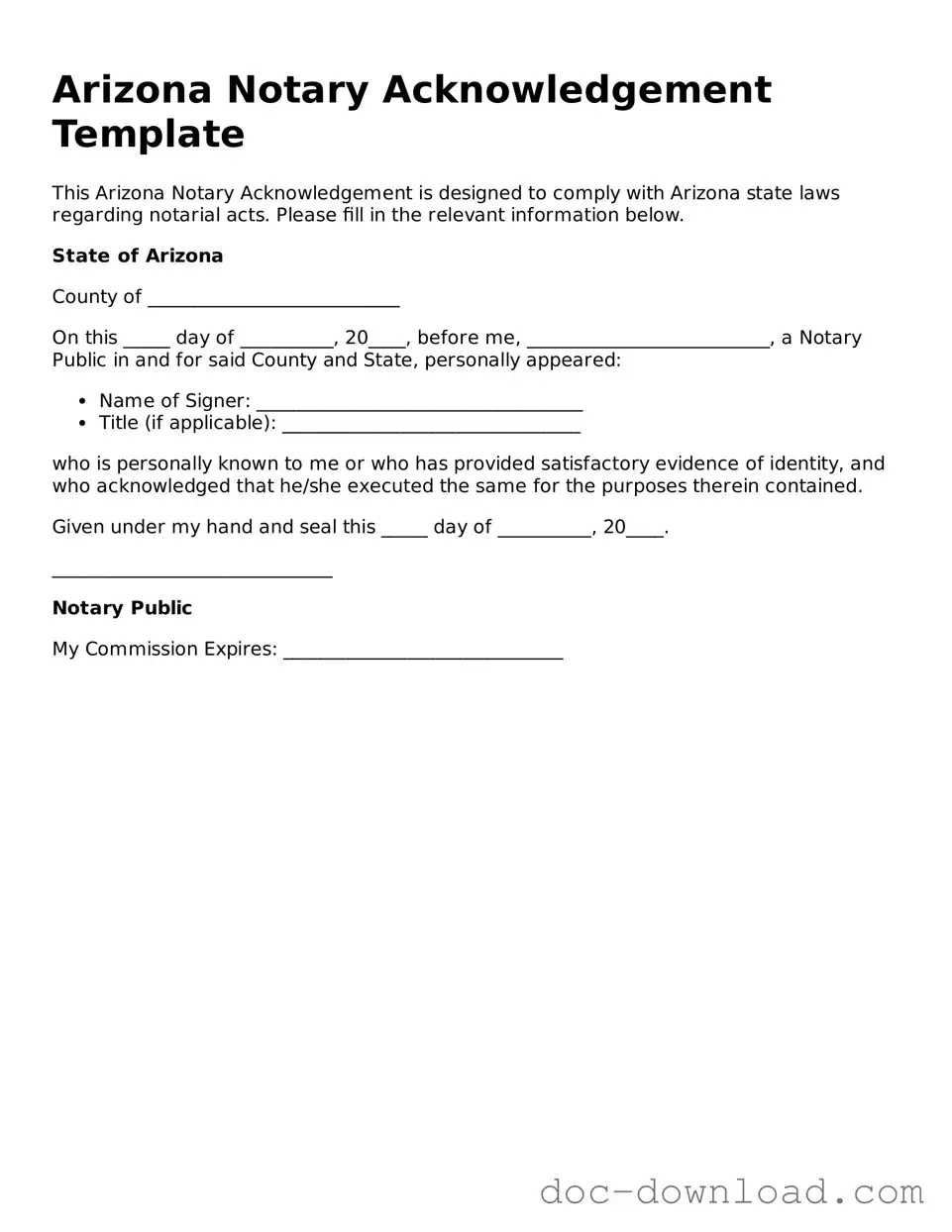The Arizona Notary Acknowledgment form is similar to the Affidavit, a sworn statement made under oath. Both documents require a notary to witness the signing, ensuring that the person signing is who they claim to be. This adds a layer of authenticity and credibility, as the notary verifies the identity of the affiant. Like the acknowledgment, an affidavit serves as a legal document that can be used in court, providing evidence of the statements made within it.
Another document that shares similarities is the Power of Attorney (POA). A POA allows one person to act on behalf of another in legal matters. Notarization is often required for a POA to be valid. This ensures that the person granting the power is doing so willingly and understands the implications. Both documents require the presence of a notary to confirm the identities of the signers and their intentions.
The Jurat is also comparable to the Notary Acknowledgment form. A jurat is a notarial act where the signer swears or affirms that the contents of a document are true. Like the acknowledgment, a jurat requires the notary to witness the signing. However, while the acknowledgment confirms the identity of the signer, the jurat also involves a sworn statement about the truthfulness of the document’s content.
Similar to the Notary Acknowledgment is the Certificate of Authentication. This document is often used in international transactions to verify that a signature is genuine. Both documents serve to authenticate signatures, but the Certificate of Authentication is typically used for documents that will be presented outside of the United States. Both require a notary to confirm the identity of the signer.
The Deed is another document that bears resemblance to the Notary Acknowledgment. A deed transfers ownership of property from one party to another and often requires notarization to be legally binding. The notary’s role is to ensure that the person signing the deed is the rightful owner and is doing so voluntarily. Both documents involve the formal acknowledgment of a signature to validate a legal transaction.
Another document similar to the Notary Acknowledgment is the Last Will and Testament. While not all wills require notarization, many states allow for a notarized will to simplify the probate process. The notary's role is to confirm the identity of the testator and ensure that they are signing the document voluntarily. This adds a layer of protection against disputes regarding the validity of the will.
The Loan Agreement is also akin to the Notary Acknowledgment form. This document outlines the terms of a loan between parties and often requires notarization to ensure that all parties understand and agree to the terms. The notary verifies the identities of the parties involved, similar to how the acknowledgment confirms the identity of the signer, ensuring that the agreement is legally enforceable.
Another document that parallels the Notary Acknowledgment is the Release of Liability. This document is used to protect one party from legal claims by another. Notarization is often required to ensure that the individual signing the release does so with full understanding of the implications. The notary's role is to confirm the identity of the signer and their willingness to enter into the agreement.
The Bill of Sale is also similar to the Notary Acknowledgment form. This document transfers ownership of personal property from one person to another and may require notarization for certain types of transactions. The notary verifies the identities of the parties involved, ensuring that the transfer of ownership is legitimate and recognized under the law.
For those seeking to understand legal releases, the crucial step of completing a Release of Liability form requirement can provide valuable protection against potential claims during risky activities.
Lastly, the Consent to Travel form shares similarities with the Notary Acknowledgment. This document is often used when a child is traveling with someone who is not their parent or legal guardian. Notarization is required to confirm that the parent or guardian is granting permission for the travel. Like the acknowledgment, the notary's role is to verify the identity of the signer and ensure that the consent is given voluntarily.
